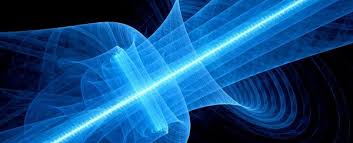
Breaking News
 $26M Frozen on Blockchain - With One Click
$26M Frozen on Blockchain - With One Click
 Italy are on national strike shutdown rejecting digital enslavement...
Italy are on national strike shutdown rejecting digital enslavement...
 The following U.S. states are currently using the rebranded "Reporty Homeland Security" so
The following U.S. states are currently using the rebranded "Reporty Homeland Security" so
 NATO Chief Urges Europe To Prepare For Long-Term World War With Russia, China, Iran & North Korea
NATO Chief Urges Europe To Prepare For Long-Term World War With Russia, China, Iran & North Korea
Top Tech News
 HUGE 32kWh LiFePO4 DIY Battery w/ 628Ah Cells! 90 Minute Build
HUGE 32kWh LiFePO4 DIY Battery w/ 628Ah Cells! 90 Minute Build
 What Has Bitcoin Become 17 Years After Satoshi Nakamoto Published The Whitepaper?
What Has Bitcoin Become 17 Years After Satoshi Nakamoto Published The Whitepaper?
 Japan just injected artificial blood into a human. No blood type needed. No refrigeration.
Japan just injected artificial blood into a human. No blood type needed. No refrigeration.
 The 6 Best LLM Tools To Run Models Locally
The 6 Best LLM Tools To Run Models Locally
 Testing My First Sodium-Ion Solar Battery
Testing My First Sodium-Ion Solar Battery
 A man once paralyzed from the waist down now stands on his own, not with machines or wires,...
A man once paralyzed from the waist down now stands on his own, not with machines or wires,...
 Review: Thumb-sized thermal camera turns your phone into a smart tool
Review: Thumb-sized thermal camera turns your phone into a smart tool
 Army To Bring Nuclear Microreactors To Its Bases By 2028
Army To Bring Nuclear Microreactors To Its Bases By 2028
 Nissan Says It's On Track For Solid-State Batteries That Double EV Range By 2028
Nissan Says It's On Track For Solid-State Batteries That Double EV Range By 2028
Global Quantum Communication Network has Been Proven Feasible With 20,000 km...

The first exchange of a few photons per pulse has been performed between two different satellites 20,000 kilometers apart. This was between the Russian GLONASS constellation and the Space Geodesy Centre of the Italian Space Agency.
The longest channel length previously demonstrated was around 7,000 km, in an experiment using a Medium-Earth-Orbit (MEO) satellite that we reported in 2016.
Arxiv – Towards quantum communication from global navigation satellite system (8 pages).
Satellite-based quantum communication (QC) is an invaluable resource for the realization of a quantum network at the global scale. In this regard, the use of satellites well beyond the low Earth orbit gives the advantage of long communication time with a ground station. However, high-orbit satellites pose a great technological challenge due to the high diffraction losses of the optical channel, and the experimental investigation of such quantum channels is still lacking. Here, we report on the first experimental exchange of single photons from a global navigation satellite system (GNSS) at a slant distance of 20 000 km, by exploiting the retroreflector array mounted on GLONASS satellites.

 Carbon based computers that run on iron
Carbon based computers that run on iron

